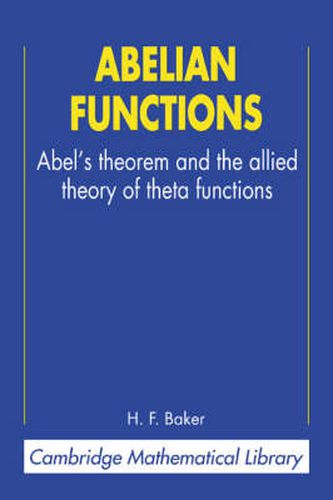Readings Newsletter
Become a Readings Member to make your shopping experience even easier.
Sign in or sign up for free!
You’re not far away from qualifying for FREE standard shipping within Australia
You’ve qualified for FREE standard shipping within Australia
The cart is loading…






Classical algebraic geometry, inseparably connected with the names of Abel, Riemann, Weierstrass, Poincare, Clebsch, Jacobi and other outstanding mathematicians of the last century, was mainly an analytical theory. In our century it has been enriched by the methods and ideas of topology, commutative algebra and Grothendieck’s schemes seemed to have replaced once and forever the somewhat naive language of classical algebraic geometry. This book contains more than its modest title suggests. Written in 1897, its scope was as broad as it could possibly be, namely to cover the whole of algebraic geometry, and associated theories. The subject is discussed by Baker in terms of transcendental functions, and in particular theta functions. Many of the ideas put forward are of continuing relevance today, and some of the most exciting ideas from theoretical physics draw on work presented here.
$9.00 standard shipping within Australia
FREE standard shipping within Australia for orders over $100.00
Express & International shipping calculated at checkout
Classical algebraic geometry, inseparably connected with the names of Abel, Riemann, Weierstrass, Poincare, Clebsch, Jacobi and other outstanding mathematicians of the last century, was mainly an analytical theory. In our century it has been enriched by the methods and ideas of topology, commutative algebra and Grothendieck’s schemes seemed to have replaced once and forever the somewhat naive language of classical algebraic geometry. This book contains more than its modest title suggests. Written in 1897, its scope was as broad as it could possibly be, namely to cover the whole of algebraic geometry, and associated theories. The subject is discussed by Baker in terms of transcendental functions, and in particular theta functions. Many of the ideas put forward are of continuing relevance today, and some of the most exciting ideas from theoretical physics draw on work presented here.